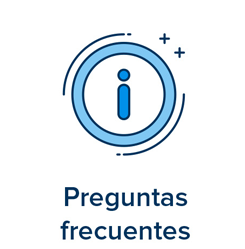UAS/Drones
Aeromodelismo
Marco normativo aeromodelismo
Aeromodelos y aeromodelistas están sujetos al cumplimiento de Reglamento de Ejecución (UE) 2019/947 aplicable desde el 31 de diciembre de 2020, siempre que dichos vuelos no se realicen en el interior de edificios o espacios completamente cerrados.
Registro como operadores UAS
- Con aeromodelos que tengan una masa máxima al despegue (MTOM) superior a los 250 gramos o que, en caso de colisión, pueda transferir a un ser humano una energía cinética superior a 80 julios (por ejemplo, drones “racers”).
- Con aeromodelos que cuenten con sensores capaces de capturar datos personales y no se consideren juguetes (según Directiva 2009/48/CE), como por ejemplo con cámara de fotos o video de MTOM<250g, excepto juguetes.
- En categoría ‘específica’ (art. 14.5.b Reg.(UE)2019/947).
- A nivel individual (necesario DNI Electrónico, certificado digital o DNI escaneado), según las instrucciones facilitadas en el apartado de registro de operador UAS/drones de la web de AESA.
- Dentro del marco de un club o asociación de aeromodelismo, dando permiso al club o asociación, para que este los registre en su nombre. Para ello se dispone de la siguiente guía de registro para clubes y asociaciones de aeromodelismo:
Independientemente de las distintas opciones indicadas posteriormente para la práctica del aeromodelismo, todos los pilotos de aeromodelos deben estar registrados como operadores de UAS siempre que pretendan realizar vuelos:
El registro como operador de UAS es gratuito y se realiza a través de la sede electrónica de AESA. Para realizar dicho registro hay dos opciones:
Guía de registro como operador de UAS para clubes y asociaciones de aeromodelismo V2
La edad mínima para registrase como operador de UAS es de 16 años. Para aquellos usuarios con edad inferior, deberán operar al amparo de un operador de UAS registrado.
En lo relativo al registro de aeronaves en la aplicación de AESA, únicamente existe obligación de registrar los aeromodelos cuando se pretenda operar en categoría “específica”.
Vuelo con aeromodelos
- Desarrollo de material específico de formación incluyendo el esquema de no conflicto;
- Explicación del reglamento de régimen interno;
- Instrucción por parte de pilotos experimentados;
- Iniciación paulatina al vuelo de pilotos noveles y menores de 16 años;
- Supervisión y asesoramiento continuo por parte de pilotos experimentados;
- Asegurar una energía cinética inferior a 34 KJ en las operaciones y, un margen por riesgo en tierra de al menos 120 m.
- Realizadas a una altura superior a 120 m;
- Realizadas con aeronaves con una MTOM superior a 25 kg;
- Realizadas con aeronaves que no sean de fabricación privada y lleven un sistema de combustión;
- Que impliquen el sobrevuelo de concentraciones de personas;
- Realizadas más allá del alcance visual del piloto (BVLOS);
- Los pilotos que vuelen en el marco del club o asociación de aeromodelismo conozcan las limitaciones y condiciones definidas en la autorización;
- Los pilotos que vuelen en el marco del club o asociación de aeromodelismo reciban asistencia para alcanzar la competencia mínima que les permita pilotar el UAS de forma segura;
- El club o asociación de aeromodelismo tome las medidas adecuadas cuando es conocedor de que un piloto no cumple las condiciones y limitaciones definidas en la autorización;
- El club o asociación de aeromodelismo proporcione a AESA la documentación necesaria con fines de supervisión y seguimiento.
Actualmente, la práctica del aeromodelismo en España puede realizarse siguiendo alguna de las siguientes opciones, siempre y cuando se cumplan las condiciones definidas en cada uno de ellos y se encuentre registrado como operador de UAS según lo indicado en el apartado anterior:
OPCIÓN 1 Vuelos en categoría «abierta» cumpliendo los requisitos particulares de la subcategoría A3 según el Reglamento (UE) 2019/947
Estos vuelos se deben realizar en zonas en las no se ponga en peligro a ninguna persona no participante y a una distancia horizontal mínima de 150 m de zonas residenciales, comerciales, industriales o recreativas. Adicionalmente, se deberá respetar la limitación de altura máxima de vuelo sobre el terreno no mayor de 400 ft (120 m).
Los aeromodelos deberán tener una masa máxima al despegue inferior a 25 kg y los pilotos haber superado la formación y examen correspondientes a la subcategoría A1/A3.
Para más información sobre los requisitos de operación en subcategoría A3 click aquí.
Más información sobre la formación y examen de piloto a distancia en subcategoría A1/A3 aquí.
En lo relativo a la edad mínima de los pilotos que pueden volar en categoría «abierta» subcategoría A3, dicha edad se establece en 16 años. Sin embargo, no existirá una edad mínima siempre que el piloto a distancia tenga la formación adecuada y vuele supervisado por un piloto de UAS con edad igual o superior a 16 años.
OPCIÓN 2 Vuelos en zonas geográficas particulares
Una zona geográfica de UAS se define como una parte del espacio aéreo establecida por la autoridad competente que facilita, restringe o excluye operaciones de UAS con el fin de gestionar los riesgos para la seguridad, la protección, la privacidad, la protección de datos personales o el medio ambiente.
Al amparo del artículo 15 del Reglamento de Ejecución (UE) 2019/947, la Comisión Interministerial Defensa – Transportes, Movilidad y Agenda Urbana (CIDETMA), organismo competente en materia de estructuración del espacio aéreo, podrá designar zonas geográficas en las que las operaciones de UAS estén exentas de uno o varios requisitos de la categoría “abierta”.
Se han definido zonas geográficas de UAS para realizar actividades de aeromodelismo en subcategoría A3, con exención al cumplimiento de requisitos de edad mínima y formación de pilotos a distancia establecidos en el Reglamento de Ejecución (UE) 2019/947, en todos los campos de aeromodelismo publicados en el AIP, siempre y cuando se cumpla con las siguientes medidas alternativas:
OPCIÓN 3 Autorización emitida por la autoridad competente a operaciones con UAS bajo el amparo de un club o asociación de aeromodelismo
Dependiendo de las operaciones a realizar, si no se pueden enmarcar dentro de la categoría abierta (opción 1) ni se ha establecido ninguna zona geográfica (opción 2), será necesaria la emisión de una autorización operacional emitida por AESA a petición de un club o asociación de aeromodelismo.
De acuerdo con lo indicado en el artículo 16 del Reglamento de Ejecución (UE) 2019/947, un club, asociación o federación de aeromodelismo podrá solicitar a AESA la expedición de una autorización para realizar operaciones con UAS en el marco de clubes o asociaciones de aeromodelismo.
A modo de ejemplo, operaciones que requerirían de una autorización operacional serían las siguientes:
Las autorizaciones que AESA pudiera expedir a los clubes o asociaciones de aeromodelismo se harán de conformidad con los procedimientos, la estructura organizativa y el sistema de gestión del club o asociación de aeromodelismo, asegurándose de que:
En la autorización expedida por AESA se especificarán las condiciones en las que podrán efectuarse las operaciones de vuelo con aeromodelos en el ámbito del club o asociación. Dicha autorización se limitará al territorio nacional.
Para solicitar una autorización de operaciones de UAS en el marco de clubes y asociaciones de aeromodelismo, el interesado podrá dirigir su petición a la División de UAS de AESA mediante el trámite habilitado para ese fin. Se pone a disposición de los clubes o asociaciones una guía para la presentación de solicitudes de autorización en el siguiente enlace:
Guía de presentación de autorización operacional para aeromodelismo v3
En cualquier caso, la solicitud debe realizarla el representante del club, asociación o federación de aeromodelismo adjuntando el manual de operaciones que satisfaga los requisitos establecidos en el apartado 2.b) del artículo 16 del Reglamento de Ejecución (UE) 2019/947. Para la elaboración del manual de operaciones requerido, dispone del siguiente material orientativo con el contenido mínimo a incluir:
Material orientativo sobre el manual de una federación, asociación o club de aeromodelismo v1
Zonas geográficas de UAS
En todo caso el lugar de vuelo deberá cumplir con las limitaciones locales que pudieran aplicar (zonas geográficas de UAS). Para más información consultar el apartado “vuelos con UAS/drones (zonificación)”
Información adicional
Para más información respecto a la práctica del aeromodelismo puede consultar la siguiente presentación:
Presentación sobre la práctica del aeromodelismo con el nuevo marco normativo Ed.04
Contacto División UAS de AESA:
En caso de duda o situaciones especiales relacionadas con el aeromodelismo, puede dirigir su consulta al buzón de drones (drones.aesa@seguridadaerea.es).




